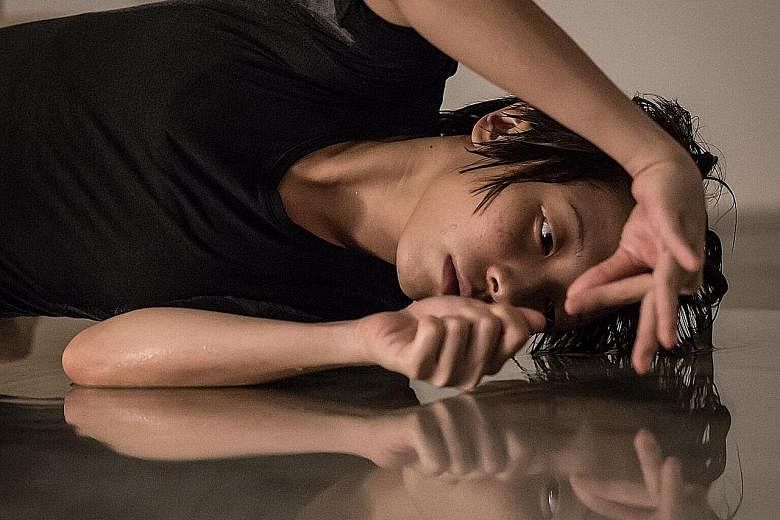REVIEW / DANCE
ARCHIPELAGO ARCHIVES EXHIBIT #3: IF I COULD SET WITH THE SUN
Raw Moves
Goodman Arts Centre Multi-purpose studios 1 and 2/Last Saturday
Dance takes an anthropological approach in Raw Moves' latest performance, Archipelago Archives Exhibit #3: If I Could Set With The Sun, choreographed and conceptualised by Kiran Kumar.
The meditative three-hour performance is part of his ongoing research on the dance cultures of the Indian sub-continent and the Indonesian archipelago.
Presented in two separate rooms side by side, he cleverly broke down the dance forms of two very complex and long-standing cultures (Indian and Indonesian) into smaller parts for closer examination. Those attending the performance were free to move between the rooms.
In one room, recorded images of temple walls, courtyards and majestic river scenes at sunrise and sounds of gamelan music gave the performance cultural context. The choreographer's observations and musings were projected as plain text next to these images. Sensitively written, the text shifted from the storytelling of epic Indian legends to descriptions of how time is kept by a performer through listening to the repeated chiming of gongs. It was in this careful composition of text and image that Kumar managed to present his research in a way that was poetic and analytical at the same time.
In the other room, company dancers Jeryl Lee and Matthew Goh provided the live element to the work in a series of glacially slow solos performed in a shallow square pool of water. Delicately, the dancers moved with a calm introspection, their gazes turned quietly inwards as if surveying their vast internal worlds. In this work, movement did not convey a surge of excited energy, but a sense of unhurried stasis as if poses were melting from one to another.
The surface of the water acted like a mirror, reflecting their dancing bodies and providing the wondrously fulfilling image of two worlds possibly merging. The water also ingeniously drew attention to the bodies in motion. Ripples in it served as visual reverberations of a step taken by a foot; the very moment the calm surface of the water was disturbed by a palm gently placed in it was a tiny yet momentous and gratifying gesture.
Indeed, the simple decision to place a dancing body in a square pool of water was the result of a sensitive choreographic process and provided so much more to see, feel, hear and think about.
Kumar's decision to present dance in the format of a durational performance primed the viewer to watch the performance in a different way.
The expectations associated with a conventional dance performance were removed. Instead, there was an invitation to partake in an acute mode of observation and inquiry into dance as well as dance forms and the respective cultures they reside in.
This observation was far from dry though. Kumar's multi-disciplinary approach incorporating elements of video, performance, text and sound ensured a clear framework without being limiting or didactic.
It was like a fragmented documentary of sorts, where enough information was provided to contextualise the work and yet give space for each viewer to imagine.

